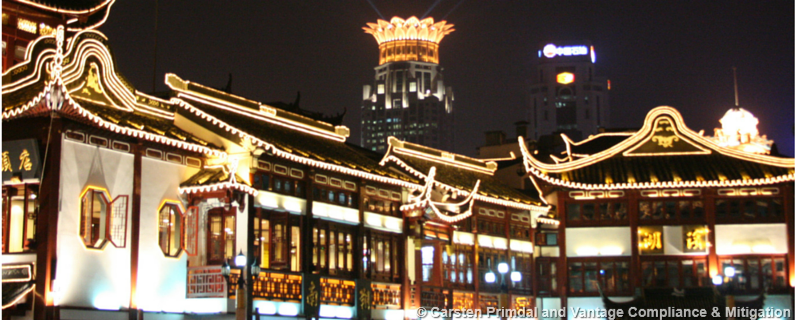Despite internal upheaval in many of its markets, China’s role in the future of global trade has just taken a big step forward. On November 30, 2015, the International Monetary Fund announced that the Chinese Yuan will join its basket of reserve currencies [1]. According to IMF chief Christine Lagarde, the move will integrate China’s economy into the global financial system.
THE INTERNATIONAL MONETARY FUND IS THE WORLD’S BANK:
After World War II, it was apparent that some form of financial assistance organization would be beneficial as Europe, Asia and North America recovered from that tragedy. The “World Bank [2]” was created by the U.S. and British governments to promote capitalist policies across many borders. The “International Monetary Fund” (IMF) was created to reduce currency exchange restrictions and to lend money to recovering nations as they rebuilt both their infrastructures and their economies.
Over time, the IMF contributed to the repair of Europe’s infrastructure after the war, the rise of international trade in general, and the promotion of international monetary cooperation. To effectively cross all borders, the IMF has created an asset known as “Special Drawing Rights,” (SDR) which is a reserve of international currencies that maintain international financial power. Until November 30th, that reserve group consisted only of the United States dollar, the European Euro, the British pound and the Japanese yen. The SDR serves almost as the IMF’s own currency and allows banks from many countries to interact with the IMF using a consistent currency value. It also provides the foundation for the mix of currencies the World Bank draws from when making international loans. The additional of the Yuan to the SDR reflects the IMF’s recognition that China’s substantial role in international trade is permanent and profound.
2015 WAS A DIFFICULT YEAR FOR CHINA:
Admittedly, China has had a difficult 2015. Explosions rocked several industrial communities, causing hundreds of deaths and millions of dollars in damages. The Chinese government has attempted to provide stability with industry-wide reforms and valuation fluctuations of its currencies. Despite all that, the “Purchasing Managers Index [3]” (PMI) dropped to 49.6 in November from 49.8 in October. (The PMI is a measure of the activity within any given industry. Growth in an industry is reflected when the PMI is above 50. Retraction of an industrial sector is reflected when the PMI is below 50.) Many industrial manufacturers who currently rely on China for their supply chain production components are concerned that the country’s economy is becoming unstable, and that their present and/or future contracts may not be fulfilled.
DESPITE THE CHALLENGES, THERE IS OPTIMISM FOR CHINA’S ECONOMY:
Other indicators of China’s effective engagement with global economies also reflect optimism. In the past few years, China’s investors [4] have been reaching out to international companies, offering billions in international currencies in investment funds. The biggest target for those investors: the United States.
The focus on the US is not political, either, but a calculated recognition of that country’s leadership in innovation. More than 25% of all international patent applications originate in the U.S., and the country boasts 15 of the world’s top 25 research universities. A full third of the world’s R&D investments are made in the US. China’s investors are investing in innovations and technologies that will improve their industrial efforts both in the foreign countries and at home. As much as China’s internal industries have grown in the past thirty years, Chinese industrialists are now looking to further their international positions by connecting and doing business outside the Chinese borders and international corporations are welcoming the partnerships. And, like the rest of the world, at least a percentage of China’s recent woes have been driven by the recent world recession; some of those challenges should recede as the effects of the Recession dwindle. Regardless of the challenges of 2015, the IMF has taken the step to declare to the world its belief that China will likely retain its current position as an international trade leader.
If you would like to discuss how these recent events might affect your Chinese suppliers [5], contact me [6] today.
Links: —— [1] http://www.bbc.com/news/business-34957580%20%20%20 [2] http://www.unesco.org/archives/sio/Eng/presentation_print.php?idOrg=1020%20%20 [3] http://www.bbc.com/news/business-34960877%20%20%20%20%20 [4] http://www.chinabusinessreview.com/sparking-new-business-us-innovation-with-chinese-funding/%20%20 [5] https://vantagecompliance.com/ [6] https://vantagecompliance.com/contact/
You may also like to read some of my other blogs. They can be found here:
Regional Variations Will Impact Rollout of China’s Two-Child Rule – Part 2
Two-Child Policy May Open New Economic Doors in China – Part 1
“Red Flag”: Reducing Risks in your China Supply Chain
Flexiblity of Chinese Import Suppliers Will Weather Changes in Global Manufacturing Sector
Communication and Relationships Smooth the Process of Importing From China
Protect Your Manufacturing Outcomes By Avoiding Product Delays and Failures
Reputable Chinese Suppliers Maintain China’s Industrial Reputation
China’s Economic Overhaul Will Improve Global Supply Chains
Manufacturing Compromises Can Ruin Your Brand
Tenacity and Communications Reduce Risk of Chinese Child Labour Law Violations
Safety Study Identifies Chinese Supply Factory Risks
China Manufacturing Industry Challenges Trigger Inspections, Consequences
Risk Mitigation Can Prevent Chinese Supply Chain Disruption
Tips and Traps of Contracting in China
Keeping Your Supply Chain Green: Avoiding the Environmental Polluters when sourcing in China
Ensure Timely Contract Compliance with a Chinese Supply Chain Expert
Two Key Questions To Answer Before Onboarding Your Chinese Manufacturing Supplier
Off-Shore Manufacturer’s Certificates Require Credibility
Factory Planning Principles Improve Supply Chain Quality
Mitigating Risk of Quality Fade in Overseas Manufacturing Facilities
How to Assure your “Green” Supply Chain in China
ChAFTA Opens Doors for increase in China-Australia Business relations
China Verification for Your Manufacturing Supplier Needs
Australian Industry Agreements Encourage More Chinese Factory Verifications
China Factory Verification: Check Before You Buy
Frozen berry recall highlights potential supply chain risks in offshore production



